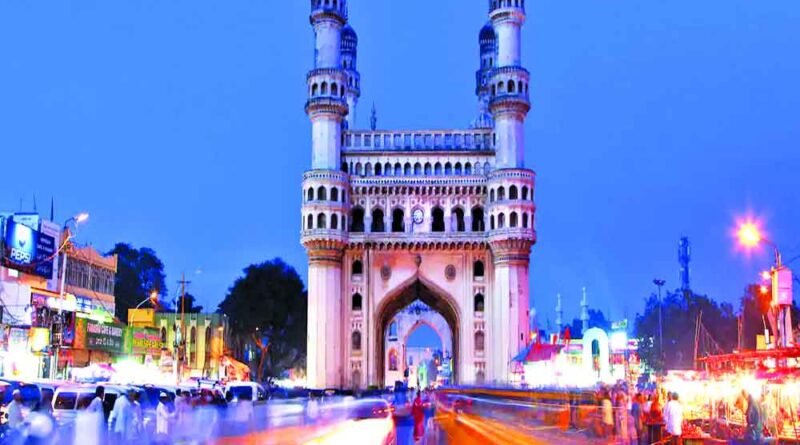Hyderabad was liberated by India
Hyderabad state under Nizam was all set to become a Pakistani province or an independent state; its accession to India was not smooth
Indians have an uncanny ability to delude themselves of the truth in the service of distorted secularism. The current delusion relates to the accession of Hyderabad State in 1948. The call by the Telangana Rashtra Samiti (TRS) and the All India Majlis-e-Ittehadul Muslimeen (AIMIM) to commemorate Sept 17 as Telangana Unity Day is an obfuscation; an attempt to camouflage the violence, intrigue, and Islamic xenophobia that marked that turbulent occurrence.
Telangana carved out of Andhra Pradesh in 2014
largely comprises the old Hyderabad State. Historically Hyderabad State owes its origin to the fragmentation of the Mughal Empire after Aurangzeb’s death in 1707 and fancied itself as the successor state of the Moghul Empire.
In 1947, Hyderabad was ruled by the 7th Nizam -Mir Osman Ali Khan and was the largest of the princely states covering 80,000 square miles of territory. The Nizam was one of the richest men on earth. Though a progressive ruler credited with initiating several public endeavors, he oversaw an Islamic State that discriminated against Hindus (85 per cent of the population). More than 80 per cent of the bureaucracy and 90 per cent of the Army and police force were made up of Muslims. The Hyderabad railway station had separate rooms ‘labeled “Moslem Tea Room” and “Hindu Tea Room.” (Time Magazine, 1948)
At the time of partition, Nizam nurtured ambitions of remaining independent or joining Pakistan; he refused to accede to India. He indulged in a series of machinations to undermine unification with India: he enlisted a noted British lawyer Sir Walter Monckton to lobby the British, conspired with Jinnah and Pakistan, and allowed the Razakars to commit atrocities against Hindus.
There were voices within Britain that sided with Nizam. Sir Winston Churchill argued in the House of Commons that the British had a ‘personal
obligation … not to allow a state which they had declared a sovereign state to be
strangled, starved out or overborne by violence.’ Another member of Parliament RA Butler declared that Britain should press for the ‘just claims of Hyderabad to remain independent.’ (RamchandraGuha. India After Gandhi. 2007).
When Lord Mountbatten, the last Viceroy failed to humor him, the Nizam signed a Standstill Agreement to maintain the status
quo and agreed to negotiate with the Indian government.However, this was a ploy. Soon after signing the Agreement, he prohibited the export of precious metals, rendered Indian currency illegal, and proffered Pakistan a loan of 22 crores in the form of Indian Securities.
The Nizam despite a
personal animus with Mohammed Ali Jinnah continued to conspire with him against India, even after partition. In a letter to Jinnah, he wrote: “H.E.H. would of course much prefer to have close relations with Pakistan rather than with the Dominion of India. It is the landlocked position of Hyderabad in the belly of the most Hindu part of Hindustan which makes it inevitable …. “If and when Pakistan and Hyderabad are in a strong enough position, H.E.H. would review the position to make his ties closer with Pakistan…
On the ground, the Nizam encouraged the growth of the Razakars, the rabidly communal stormtroopers of the Majlis-e-IttehadulMuslimeen (forerunner of the AIMIM). Their leader in 1946 was Kasim Razvi, a Muslim supremacist and Hindu-hater: ‘Hyderabad is an Islamic State……. When once the Indian Union makes any aggression on us, the four and a half crores of Muslims of India -will raise the banner of revolt…. A Muslim is a warrior….. let us march forward, cut our enemies to pieces, and establish our Islamic supremacy….. A Hindu is a kafir, who worships stones and monkeys, who drinks cow’s urine
and eats cow-dung in the name of religion,…..’ (The Indomitable Sardar. Bhartiya Vidya Bhavan. 1990)
The Razakars unleashed a reign of terror – hundreds of Hindus were killed or forcibly converted and women were raped.Simultaneously Hyderabad began formal
military preparations-building airports and illegally acquiring arms and ammunition.For India, an independent Muslim State smack in the middle was a ‘cancer in the belly of India’, as SardarVallabhai Patel called it
When the atrocities committed against the Hindus became unbearable, Sardar Patel ordered the Indian Army to enter Hyderabad on September 13, 1948 (nicknamed Operation Polo). Within 108 hours the mission was complete. The Hyderabad Army surrendered, and the Razakars turned tail and fled. On September 17, Hyderabad became a part of India.
The military preparations, the acquisition of arms, the atrocities against the Hindus, and the liaison with Pakistan -all attest to an “undeclared war’. Therefore, to call it a day of integration is a denial of the truth; the perpetuation of falsehood, and another example of immoral minority appeasement. Hyderabad was not peacefully integrated. Hyderabad was liberated from autocracy and Islamic fanaticism to become a part of a democratic and secular polity.
(The author, a US-based academic and political commentator, frequently writes on current affairs in India. The views expressed are personal.)
Source: The Pioneer news




